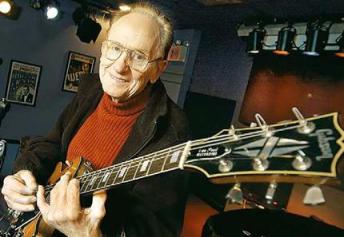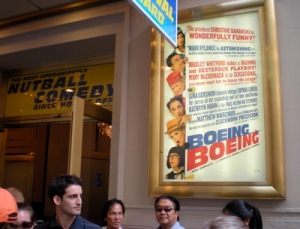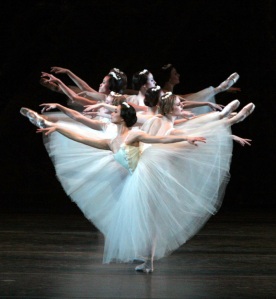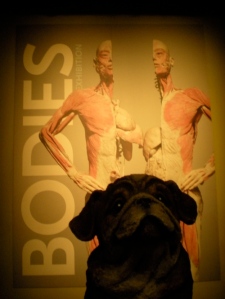
Early mornings on Saturdays are sacrosanct for a 22-year-old, too precious to be spent on overrated, grown-up things like actually waking up and getting the day started. Thus, it was a little challenging to get around my cognitive dissonance about being up and about at seven on that balmy morning in late August. I was hoping to keep the noise down while setting up the pan, ladle and cooking oil in my tiny kitchen. But, as I’ve come to learn in the past week, the acoustics of New York City walls can amplify incriminating sounds and rustlings that it was a feat to keep my roommate from catching me, in a manner of speaking, with my pans down.
In a few minutes, my mom would give me a call from Cebu City (my hometown and the oldest city in the Philippines), where it’s just past dinnertime, and dictate the recipe of pork asado (pork roast) which, if things turn out as planned, would be the first proper dish I’ve cooked in my life. This sudden affinity for the culinary arts, though, is more akin to a shotgun wedding than a long and steady courtship. Since arriving in the Big Apple two weeks prior, the shameless ubiquity of burgers, fries and salads and the realization that rice was not the staple food this side of Sex and The City left me panicked. The sight of a McDonald’s outlet, until then an insufferable yet perversely endearing blight that was the punchline of “Super Size Me”, has begun to acquire a menace that rattled the core of my well-being. Something had to be done, and fast.
If the morning’s cooking shebang was the wedding ceremony, then the call from my mother would be the exchange of vows — or whichever part of the ceremony signifying that I was fully conscious of what I was marrying myself into but was still willing to go through it. A conversation which involves my mother telling me what to do is fodder for Chekhovian tragedies; what is otherwise a chitchat about eggplants, string beans and patola (sponge gourd) becomes a loaded setup of innuendos and lovelaced manipulations that would do the Russian master’s women proud. The list of ingredients and the steps involved in preparing pork asado are nothing remarkable but it’s a dish that my mom has put her distinctive – and sumptuous – stamp on that I couldn’t help feeling a little pressure.
I was famished and the desire to cook something the same way my mother would, a dish whose flavors were comfortable and familiar, was tempting. But I was halfway around the world from the kitchen I grew up in, so I doubt it would hurt if I put half a teaspoon more of salt and simmer a little longer than it takes for the meat to become tender, would it? The proposed variations were kept undercover and I kept my banter easy and agreeable to keep my mom off the scent. It was I, however, who could not resist the scent of the pork asado that I know – there could be only one – and as I prepared the meal amid the cacophony of clattering utensils, I ended up recalling flourishes my mom used to do in her own kitchen and got a little annoyed at myself for mimicking them, my minor culinary insurgencies all but forgotten. Half an hour later, I had my first real meal in weeks.
Bollywood Dreams, Salami Nightmares
The success of my initial attempt at pork asado (it was a bit on the salty side, but this I kept to myself) augured well for more adventures in the ktichen. While I signed up for the student meal program at NYU, breakfasting on the ham and cheese omelets that the burly Dominican server whips up as briskly and adroitly as any halal food cart attendant and lunching on pasta marinara or alfredo, my palate still had a hard time taking cold foods seriously. At one of our pre-term events in business school, various selections of cold wrap were served for lunch. My wrap was a monstrosity stuffed with lebanon bologna, proscuitto ham and feta cheese. It was a good thing that my seatmate, a genial and chatty Indian Finance major, had just embarked on a spirited account of Bollywood cinema after I casually mentioned having seen Lagaan back in Manila and liking it.
The 400-student MBA class was divided into six blocks and, for the duration of the two week pre-term, students become acquainted with their blockmates in a series of recreational and academic activities. Within the first few days of pre-term, I found out in quick succession that I was the youngest in our batch, that I belonged to the small, wayward group of students not specializing in Finance (I was going to major in Marketing and Media and Entertainment) and that I was the only Filipino international student. Being the youngest to get into one of the top US MBA programs was a fact I must admit to being fond of, though I doubt that it would ingratiate me to the thirtysomething Type-A Wall Streeters whom I suspect would be as Darwinian in the classroom as they are on the trading floor.
By the day of the cold wrap, I had become more discriminating about which of my classmates to divulge my post-business school plans to; in my application essay, I had written that I planned to eventually return to the Philippines and launch an independent film studio with an eye on the burgeoning international markets, and one of my productions would be an adaptation of “When The Rainbow Goddess Wept”, the spellbinding WWII folklore fantasia by the West-coast-based Filipino author Cecilia Manguerra Brainard, who happened to be Cebu-born. Sanjay, the Bollywood fan, did not roll his eyes when I told him; when your national cinema consists mostly of song-and-dance extravaganzas featuring star-crossed lovers, corrupt politicians and dramatic reversals of fortune, you’d probably be diplomatic towards other people’s cinematic indulgences.

As he held forth about Devdas, one of the last few Bollywood epics he saw before moving to the US, a romantic tragedy about a wealthy young Brahmin who is devastated after being separated from his childhood sweetheart who belonged to a lower caste and flees into the arms of a ravishing courtesan, he managed to set aside his own unfinished wrap (the narrative yarn was not helped by wolfing down on baloney and salami). It was only a matter of minutes before he changed the topic and asked whether I had tried Indian food such as naan and saag paneer.
Menu Crazy
In between reviewing statistical concepts and the law of diminishing returns during the fall semester, I was able to add three more recipes to my repertoire, all transmitted over the phone: humba (a Cebuano version of pork stew), chicken curry and beef teriyaki. By then, I had already been to or heard of Filipino restaurants both in Queens and in Manhattan, a number of them having the unglamorous, scrappy, lived-in feel of carenderias or cafeterias. They would be Marty Scorsese’s diner of choice if Elvie’s, a Filipino bistro in the East Village, was transplated to Little Italy circa 1973. Considerably more upmarket is the SoHo-based Cendrillon, celebrated for its rich, imaginative take on Filipino dishes, blurring the edges between kalamansi-marinated adobo and haute cuisine.
I first heard about Cendrillon at a marketing seminar organized by the consumer goods company I worked for; the speaker, a Filipino advertising director who had just come back from a stint in New York City, picked out the restaurant as a subject for an activity on branding. When it first opened in the mid-1990s, Cendrillon was marketed as a Pan-Asian experiment, its blonde ambitions made apparent by its name, a reference to a French opera about Cinderella. It was a few years later that the chef incorporated more distinctly Filipino flavors into the menu, which was well-received by the critics, although the Pan-Asian attribution has become hard to shake off.
Although the self-esteem of Filipino cuisine in a city of connoisseurs had been showing promise, the offerings were either too sparse or unremarkable for Filipino restaurants to merit their own category listing in guides like New York magazine. Walking past Elvie’s, which is a stone’s throw away from two major hospitals, I kept thinking that Filipino food in New York City would have turned out differently if it had had half the tenacity of the Filipino nurses who had doggedly sneaked their way into the city’s emergency rooms and medical wards.
Kitchen Confidential
Meanwhile, the infliltration of my own kitchen cupboards was still in progress. The dishes I usually prepared on quiet Saturday afternoons alone in the apartment, a ritual that was increasingly becoming a habit with me. I was more surprised at myself than I let on about how I had warmed to the idea of cooking; after all, I could easily hop on a train on a pilgrimage for Filipino food and reach my mecca not twenty minutes later. For the longest time, I regarded domestic chores, which I considered cooking to be a part of, with little more than condescencion. My erstwhile disdain for domestication knew no bounds. My 7-year-old sense of pride unwavering in my wide eyes, I thought that the drudgery of cleaning and scrubbing was best left to the weak-minded, the help or mothers.
At that age, I usually spent my free time reading in the school library, pretending that I can make myself invisible like making up fantastical stories, which I would either write down or narrate to my clique at recess. It didn’t take long before more characters peopled my narratives with hysterically melodramatic plot twists not unlike those in “As The World Turns”. I would write scripts all through grade school and jump at the chance of adapting them into theatrical productions in class, modifying a plot point or two to suit the current topic in Religion or Civics and History and scoring it with the soundtrack of the latest Julia Roberts movie. The trio of theater, As The World Turns and Julia Roberts did not go unnoticed and had set more than a few tongues of Parent-Teacher Association members a-wagging. Adding a flair for domestic chores to that mix would have changed my status from quirky child prodigy in an all-boys Jesuit school into something else entirely. It would have been one bit of emasculation too many. My mother did not seem to care one way or the other about my interest in household chores.

Such preoccupations seemed juvenile and distant just then as I sauteed sliced chicken in garlic, onion and tomatoes for chicken afritada (chicken cooked in tomato sauce). For the first time, my personal experience of cooking stripped bare its attendant contexts. Or rather, the contexts informing it when I was growing up were easily supplanted by new impressions, both intriguing and diverting, in those first few months in New York City. My insatiable appetite for the sensations and sensibilities that the city had to offer triggered an epiphany recalling the Zen koan, “When the Student is ready, the Master appears.” And, boy, did the student take down a lot of notes.
My repertoire of food appreciation used to be limited to chewing and swallowing; the art of eating was little more than the art of stuffing my dinner plate with as much motley assortment of entrees from my host’s birthday banquet. The “hunting and gathering” phase of gastronomic appreciation that I was initially stuck in gave way to a more sophisticated calibration of my taste buds, savoring the subtle gradations of flavor in one dish. A taste for fine dining (more of an aspiration, really, given my student budget), wine and cheese was the logical next step.
Foodie Faux Pas
While my attempts at cooking Filipino dishes went auspiciously, my early brush with Manhattan fine dining turned out to be something of a cautionary tale. In the Spring, I went on a date that I’ve come to call “Dinner at Tiffany’s”. It was at at Per Se, an obscenely swank and snobby French-New American restaurant frequented by the likes of Donald Trump and Sarah Jessica Parker and whose elegant rooms reward with an expansive view of Central Park.

The standard chef’s tasting menu, at a prix-fixe price of $200, is nine courses, including coddled eggs tipped with black-truffle purée and lobster tails, each one poached in butter, each one painted (with saffron-vanilla sauce, red-beet essence, or vermouth) in a seductively mouth-watering way. I was still a long way from mastering the gourmet’s vernacular; entrees nestled in this, dishes embedded in that or topped with a foam of the other leave me in a state. I have, however, nailed down certain New Yorker affectations that come in handy in such places.
A great example is describing wine, an exercise in conjuring metaphors and therefore always a treat for writers. Catching a whiff of gooseberries from a Sauvignon Blanc, or red currants from a Cabernet, or horse manure from a Shiraz is inspired but literal-minded. Paradoxically, the more over-the-top taste descriptions are, the more they can appeal to the layman, who you are trying to intimidate. Thus, in a tone of voice that was sober yet vaguely patronizing, I ask the waiter about which herbs and sauces are in this or that dish, checking to see that my date did not miss a beat, and smile beatifically as a barrage of high-concept desserts (thyme-infused ice cream, cucumber sorbet, a deliciously milky chocolate soufflé) is served in succession to our table.
The dinner lasted five hours and I thought I held my own impressively over dinner, the intoxication of having just tasted seventeen types of chocolate notwithstanding. The ensuing diarrhea that plagued me in the three days that followed was less than glamorous and the episode inspired my sharp-tongued close friend from high school, the knowing country mouse to my city mouse, to retort, “You can take one’s digestive system out of Cebu, but you can never take Cebu out of one’s digestive system.”
New York Is My Oyster
Although my affection for Filipino cuisine was undiminished, my palate began to wander in search of other geographies after some time. Temptations abounded; the ethnic diversity of New York City was such that each new turn or corner promised to unveil yet another unique ethnic group and its cuisine. In the borough of Queens alone, Astoria is a hub of Greek and Mediterranean cuisines while Jackson Heights is a buffet of Latin American offerings including Colombia, Argentina, Peru and Mexico, not to mention that it is the epicenter of Sanjay’s delicious samosas and saag paneer. French, Italian, Korean and Japanese restaurants are scattered all over Manhattan, while Chinese take-out is practically as ubiquitous as Starbucks outlets. While I couldn’t help feeling venturesome toward other national flavors, I was accosted by a faint sense of déjà vu, of revisiting a long-lost relative.
In attempting to escape the clutches of Filipino cuisine, a mélange of Malaysian, Chinese and Spanish influences, I inevitably ran into yet another of its uniquely sublime incarnations and, good-humouredly conceding the inescapability of certain things like one’s mother, I was less inclined to lament the fact that my gastronomic excursions did not take me very far from my origins. Come to think of it, New York City was a museum showcasing the various episodes in the history of Filipino cuisine in a vast, resplendent diorama.
The first panel, mounted in Cobble Hill, Brooklyn and its preponderance of Malaysian bistros, depicts our Malay neighbors arriving in Philippine soil during the pre-Hispanic era and preparing food by boiling, steaming, or roasting. This ranged from the usual livestock such as carabaos (tamaraws), chickens and pigs to seafood from different kinds of fish, shrimps, prawns, crustaceans and shellfish. Our most significant heirloom from this phase would be rice. Certain fixtures of Filipino cuisine, including toyo (soy sauce) and patis (fish sauce), as well as the method of stir-frying and making savory soup bases trace their roots back to pre-Hispanic trade with China, Japan, India, the Middle-East and the rest of Southeast Asia.
The second panel, which stretches along Roosevelt Avenue in Queens from Jackson Heights to Corona (my neighborhood). Spanish conquistadores certainly knew their spices and introduced Filipino cuisine to chili peppers, tomato sauces, corn and the method of sauteeing with garlic and onions. Local versions of Spanish dishes flourished in the national culinary idiom such as paella into its Filipino counterpart of arroz valenciana, chorizo into its local version of longanisa (from Spanish “longaniza”), escabeche and adobo (a close cousin to the Spanish dish adobado, and even by way of Latin America and Mexico which also have adobo dishes).
The final panel, a lofty avant-garde display that only the MOMA could undertake, showcases the galaxy of Chinese diners littered all over Manhattan. During the nineteenth century, Chinese food became a staple of the panciterias or noodle shops around the country, although they were marketed with Spanish names. “Comida China” (Chinese food) includes arroz caldo (rice and chicken gruel) and morisqueta tostada (an old term for sinangag or fried rice) and chopsuey. The concept of chopseuy evokes the very essence of New York City, a smorgasbord of cultures and flavors, embracing its motley assortment of ethnic influences yet remaining distinctly its own character, a marvel of appropriation and reinvention, not unlike Filipino cuisine.
When The Mistress is Ready, The Student Appears
 As the fall semester drew to a close and I was getting ready to fly back to Cebu in December of 2005, I had very clear ideas about the Christmas gift I’d ask from my mom. By then, I had reached a certain level of comfort with my cooking and was feeling confident enough to jazz up traditional recipes with my zing. First, I needed the compendium that packed all these recipes and I knew exactly where to find it. Minutes after arriving home in a cab from Mactan Airport, I raid the mini-library in my mom’s cabinet and, right beside Healing Wonders of Medicinal Plants, pull out her copy of Let’s Cook with Nora by Nora V. Daza (the Julia Child of the Philippines) which first came out in 1969. The receipt taped to the back of the front cover shows that it was bought at a Paul’s Book Store in Sanciangko St. on August 26, 1976 for Philippine Peso 48.00 – quite a fortune she divulged at the time, costing as much as a leather-bound Bible.
As the fall semester drew to a close and I was getting ready to fly back to Cebu in December of 2005, I had very clear ideas about the Christmas gift I’d ask from my mom. By then, I had reached a certain level of comfort with my cooking and was feeling confident enough to jazz up traditional recipes with my zing. First, I needed the compendium that packed all these recipes and I knew exactly where to find it. Minutes after arriving home in a cab from Mactan Airport, I raid the mini-library in my mom’s cabinet and, right beside Healing Wonders of Medicinal Plants, pull out her copy of Let’s Cook with Nora by Nora V. Daza (the Julia Child of the Philippines) which first came out in 1969. The receipt taped to the back of the front cover shows that it was bought at a Paul’s Book Store in Sanciangko St. on August 26, 1976 for Philippine Peso 48.00 – quite a fortune she divulged at the time, costing as much as a leather-bound Bible.
At first, she was adamantly opposed to the idea of parting with the cookbook, the pages of which were all faded and yellowed, the ‘60s-chic black-and-white illustrations adorned by brownish smudges in every pages of so. She eventually relented, but only after getting me to promise to dictate recipes to her over the phone “if the need arises”. I offered to teach her how to email as it would be more convenient to forward the recipes that way; she wouldn’t budge. It seems ludicrous now how neither I or my mom initially did not want to part with the 30-year-old copy of the cookbook when I could have easily gotten other cookbooks – classier ones, more comprehensive ones – but it was hers that I wanted, and we were both against the idea of photocopying the book. She had already asked that I dictate to her the recipe for Royal Bibingka on page 169 come Holy Week, something I was actually looking forward to, despite myself.
During the few weeks I was home, I knew better than to attempt to take over the kitchen but I was hanging around the kitchen more often when she was preparing a dish, quietly absorbing and remembering how she would sprinkle pepper into a pan or blend together the ingredients in a cooking pot while doing this or that recipe. It will probably be more than a year before my next trip back home so I wanted to get everything right. I wasn’t quite expecting this act of observing my mom in her element to be a kind of enlightenment.
Whether it was set off by the purring repetitions of the cooking utensils, their warm, silken surface, or my mom’s incantatory gestures, or the voluptuous contentment in holding one pose for an impossibly long time, I do not know. For a second, I saw my mom transform into one of the women in Vermeer’s silence-drenched small paintings, totally absorbed in the minutiae of their unremarkable domestic chores. This epiphany took place for a mere second, and the next thing I knew my mother told me that the dinner of beef caldereta was ready.













